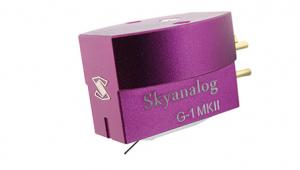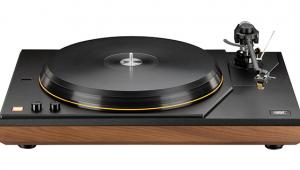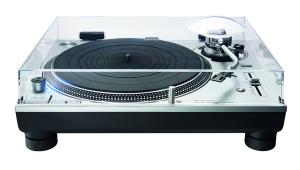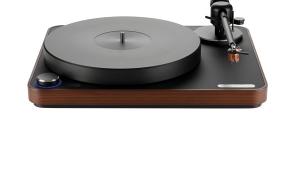Brinkmann Balance 2 (£17,495 (deck), £2895 (tube Psu), £4195 (12.1 Tonearm))
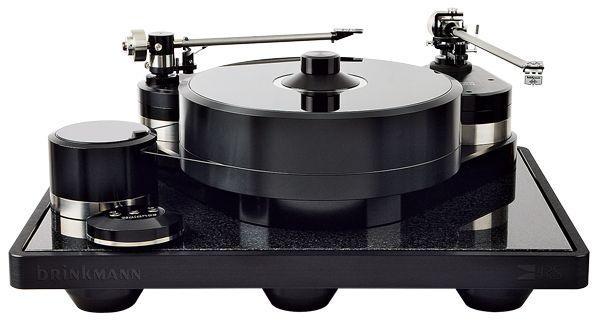
The plinth is CNC-machined from aluminium and supports both arm bases plus the bearing; it sits on three spiked feet adjustable for levelling. The bearing is made of hardened stainless steel and rotates in sintered brass bushings, but it’s unusual in that the assembly is heated by a MOSFET device in order to ensure the bearing operates at a steady temperature.
The 90mm platter is machined from a block of aluminium while a polished crystal glass mat is recessed into its top surface. A screw-down clamp presses the LP across this mirror-smooth mat.
The Sinus motor stands in its own pod and has exquisite touch controls for Off, 33.3 and 45rpm selection, with trim-pots to permit fine speed adjustment. The motor unit brings the 18kg platter up to speed in a relatively short time.
A neat transformer pack provides power for both the motor and the heated bearing assembly although an upgrade PSU (the RöNt II) is available which uses valves.
The 12.1 arm was supplied with Brinkmann’s £2495 open-bodied EMT-Ti cartridge. The alternative Brinkmann 10.0 arm, ‘effectively a unipivot’, has a miniature bearing mounted on a stainless steel tip for horizontal movement, although a second ceramic bearing lower down the shaft provides stability for the assembly. Vertical movement is provided by a second array of conventional bearings. We fitted an Ortofon Kontrapunkt B to the 10.0, a simple task as both 10.0 and 12.1 arms can be loosened for cartridge azimuth and VTA adjustment.
A wealth of detail
Starting with this pairing and the deck powered by the standard PSU we found the Brinkmann bringing to life things we’d previously been unaware of, with a sense of solidity, focus and scale only hinted at by cheaper designs.
With The Eagles’ ‘Long Road Out Of Eden’ [Universal] we were surprised by the way in which the bell that tolls quietly during the intro had real weight to its strikes. Usually this is very much something that lurks in the distance but the Balance 2 dragged it into the main action in an uncanny way.
Equally impressive was the Balance 2’s rendering of instruments, whether acoustic or electronic. The RöNt II made some interesting changes to the sound, eg, the fretless bass in ‘The Painter’ from Water Falls [Stockfisch] seemed slightly out of proportion. Yet playing the song a second time though revealed it was simply allowing the deck to dig deeper into the texture of the notes, fleshing them out better.
A switch to the 12.1 tonearm with EMT-Ti proved to be something of an ear-opener too. The relative lack of soundstage width we had noted with the 10.0 arm was suddenly a faint memory since the Brinkmann now filled the width of the room with a superbly cavernous recreation of the recording studio.
The character of the music seemed to shift back a gear slightly, with the 12.1 having a more relaxed feeling to it, in contrast to the more up-front presentation offered by the 10.0. The EMT-Ti definitely added smoothness and a slightly more cerebral hint of authority, but it was never less than joyously musical.
On the other hand, it was the 12.1 tonearm responsible for the superb opening-up of the soundstage, and it could still rock with the best of them when later re-fitted with the Ortofon cartridge. We have found some 12in arms to be a little over-smooth, but the Brinkmann 12.1 strikes a very capable sonic balance and was thus our final preferred choice.
Verdict
The Balance 2 offers both intelligent engineering and superb sound. Both tonearms tested offer their own slightly different takes on proceedings and can be used to fine-tune the end result, as can the addition of the RöNt II PSU.
Originally published in the 2014 Yearbook







